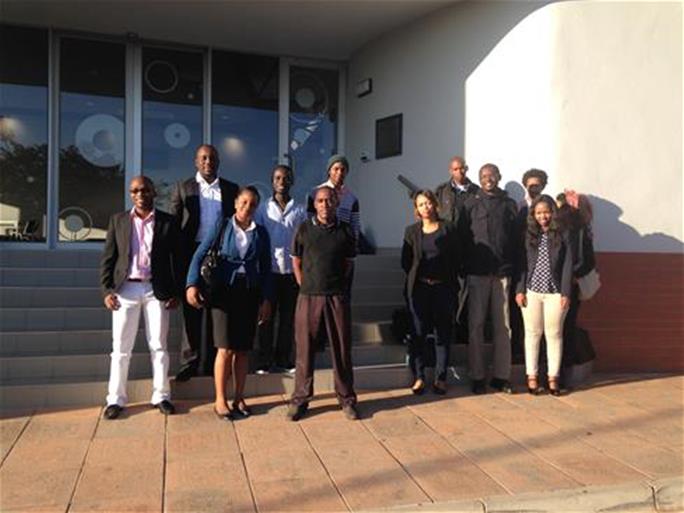PRG postgraduate students win the SAIChE Research Day prize
by
Tina velkushanova | Jul 22, 2015
The South African Institution of Chemical Engineers KwaZulu-Natal branch (SAIChE KZN) organised their annual Research Day on 17 July 2015 at Howard College Campus, University of KwaZulu-Natal. Undergraduate and postgraduate students, as well as academics, researchers and industry experts interested in the field were invited to give presentations at this event. Submissions were divided in two categories: undergraduate research projects and postgraduate/industrial research projects. General cash prizes were awarded by the panel to the top three projects in each category.
Pollution Research Group (PRG) postgraduate students and researchers participated in this event and five of them gave oral and poster presentations on their research projects including: Albert Muzhingi, Blessing Makununika, Keke Mehlomakhulu, Khonzaphi Dube and Laeticia Tartibu. Good quality research progress was demonstrated by the presenters which triggered a great deal of interest from the audience in the PRG research work. As a result of the students’ excellent performance, at the end of the SAIChE Research Day, the first and the second prizes in the postgraduate/industrial research projects category were awarded respectively to Mr Albert Muzhingi and Mr Blessing Makununika - both PRG Postgraduate students.

SAIChE Research Day 2015: PRG researchers and postgraduate students. From left to right: Blessing Makununika, Keke Mehlomakhulu, Laeticia Tartibu, Albert Muzhingi and Stubbe Adu-Poku.
Albert and Blessing are both UKZN graduates in the discipline of Chemical Engineering. They started their MScEng degrees in 2014 and have recently submitted their draft theses. Their research projects were funded under a Bill & Melinda Gates Foundation project – Reinvent the Toilet Challenge (Phase 2). The concept behind this internationally funded challenge is to use 21st century Chemical Process Engineering to develop a sanitation system to replace the 19th century technology currently in place. The ideal system will harness the energy obtained from combusting organic material in human excreta to drive the separation of pure water from the waste. While other institutions are developing prototype systems that do not consider the characteristics of the process stream to be treated, UKZN has attracted international attention by taking a needs-based approach to develop and undertake specific methods and analyses of the process streams characteristics.
Albert’s work is focused on “Forward Osmosis as a final step in the recovery of water from urine”. Forward Osmosis is a separation technology that has found few applications in industrial separations. It makes use of a concentrated draw solution of ammonium carbonate to draw water across a membrane, from which the draw solution is separated by heating and removal of ammonia and CO2. This technology may be ideal for a reinvented toilet since the components of the draw solution are by-products of the treatment of excreta, and there is sufficient low grade temperature gradient to effect the separation. This project investigated the feasibility of this technology for the separation of clean water from a stream originating from urine that has already gone through micro- and ultrafiltration steps for removal of particulate material. This technology is being considered as an alternative to heat driven phase separation such as distillation and evaporation since the temperature differentials applied would be far smaller.
Blessing’s work is focused on “Thermal Properties and Drying Characteristics of Faecal Sludge”. Before faecal sludges can be combusted, excess moisture must be removed by a drying process. This project analysed the thermal properties and drying characteristics of faecal sludge using a custom designed drying rig and classical drying theory and developed a model of the drying process for ultimate inclusion in a simulation-based design of the reinvented toilet. The drying rig allows the control of drying air temperature, flow rate and moisture concentration. Once dry, the faeces were combusted to provide energy for the overall treatment process to optimise the combustion. A new-state-of-the-art calorimeter was used to accurately measure the amount of energy that could be extracted from the combustion of faecal sludges. The entire energy budget of the reinvented toilet hinges on the values obtained in this study, and the data is much sought after by other international RTTC grantees.

SAIChE Research Day 2015 participants